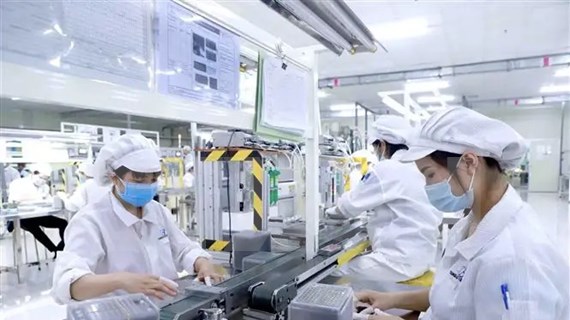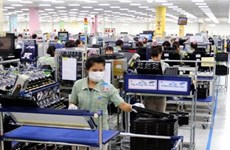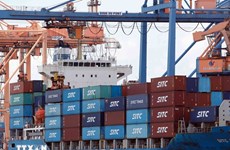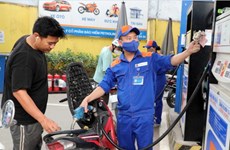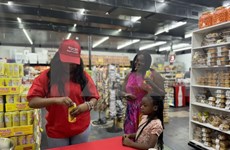Local automobile manufacturers ask for more support
Vietnam’s automobile industry is small compared to regional markets and local suppliers are asking for more support from the Government.
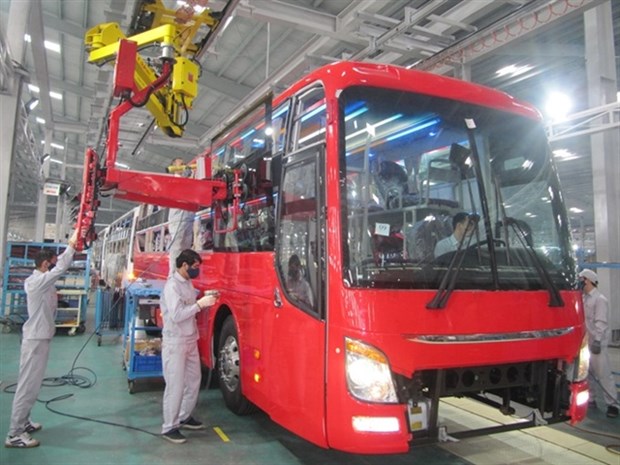 Workers at Truong Hai Automobile (Thaco) manufacture buses at its plant in the Chu Lai-Truong Hai Industrial Complex in Quang Nam province (Photo: VNA)
Workers at Truong Hai Automobile (Thaco) manufacture buses at its plant in the Chu Lai-Truong Hai Industrial Complex in Quang Nam province (Photo: VNA)Hanoi (VNS/VNA) - Vietnam’s automobile industry is small compared to regional markets and local suppliers are asking for more support from the Government.
A report from the Ministry of Industry and Trade (MoIT) says though the rate of domestically manufactured and assembled vehicles have grown, only a few suppliers are involved in the local supply chain. Compared to Thailand, the number of Vietnamese suppliers in the automotive industry is low.
The report says Thailand has nearly 700 Tier 1 suppliers, which supply parts or systems directly to original equipment manufacturers, while Vietnam has less than 100. Thailand has about 1,700 Tier 2&3 suppliers, which provide raw, or close-to-raw, materials like metals and plastics for the Tier 1 category, while Vietnam has less than 150. Locally manufactured 9-seater cars in Vietnam only meet 7-10 percent of the demand.
Pham Tuan Anh, deputy director of the department of industry, told the Vietnam News Agency at a recent seminar that market capacity was small because the local automobile industry did not have the conditions to grow.
Anh specified: “Vietnam does not offer enough support for the automobile industry.”
He also said policies that supported the automotive industry still conflicted and were unstable.
Do Thu Hoang, Deputy General Director of Toyota Vietnam, also said that following ASEAN integration in 2018, the import tax on complete cars was cut to zero percent within the bloc, and that had created more difficulties for the industry.
Hoang said the biggest challenge was the small size and output of the market. For example, the number of Toyota’s Vios model cars produced in Vietnam was only one-eighth of Thailand's, which made production costs higher than other countries in the region.
Due to limited production, most manufacturers had to import parts, which resulted in very high costs for packaging, shipping and import duties.
Hoang continued: “Currently, the cost of manufacturing in Vietnam is 10-20 percent higher than in Thailand and Indonesia.”
“Before 2018, when there were high taxes for imported cars, locally produced cars were still able to compete. Now the rate has been cut to zero percent, it is very difficult for car manufacturers in Vietnam,” she said.
Compared with Thailand and Indonesia, Vietnam’s automobile output is far behind. Thailand produces about 2 million cars and Indonesia 1.3 million cars each year, while Vietnam can only produce about 300,000.
A representative of the Vietnam Automobile Manufacturers Association (VAMA) told the seminar that local car manufacturers planned to make 500,000 cars next year.
To cope with these difficulties, local manufacturers at the seminar asked for more support policies from the State.
Pham Van Tai, General Director of Thaco Truong Hai, said: “Vietnam needs certain technical barriers to help local car makers. For example, in order to enjoy the zero percent import tax rate, imported cars must have a localisation rate of 40 percent."
He also said the Government should lower the special consumption tax on the value of domestic production in order to reduce the price of locally manufactured cars.
Another representative from the MoIT’s industry department suggested the Government offer incentives for consumers who purchase locally-made products to increase demand. The same thing had been done in Thailand and Malaysia, he said.
At the seminar, some manufacturers asked the Ministry of Finance to remove the special consumption tax for locally made parts to help them reduce prices to compete with foreign manufacturers./.





